Tag Archives: birding yates mill
Yellow-throated Warblers at Yates Mill Park in Raleigh
One of my favorite spring arrivals is the Yellow-throated Warbler. With that bold yellow, black and white plumage, they’re absolutely captivating to photograph.
I found this beauty at Yates Mill Park this past weekend. Happily he was hopping and flying at a lower level of the tree canopy so that I could get a good view.
Normally they tend to hang out much higher in the trees so it was neat to get a close up look at him 🙂

This species of wood warbler are one of a few which nests exclusively in the eastern part of the United States with a range that stretches from Missouri in Pennsylvania all the way down to Florida and into the Gulf of Mexico.
Their open cup-nests are constructed almost entirely by the female from bark strips, grasses, and weed stems, and lined with plant down and feathers. The nest is usually placed in the canopy of a pine, cypress or sycamore tree on the end of a a horizontal branch well out from the trunk at heights ranging from 15 to 60 feet above the ground.


Happily these gorgeous birds will spend the summer raising their families here in the Tarheel state. They will stick around until late September (or early October in our eastern counties) so there is still plenty of time for us to enjoy them this year!
Photos by @sally_siko of @birdwatching_nc on the full frame beast of an SLR, the mighty @canonusa
#5Ds
Eastern Phoebe’s in North Carolina
While birding at Yates Mill Park in Raleigh this past weekend, I was delighted to see this sweet little Eastern Phoebe looking for a meal over the pond.
There were actually several of them flying around and I was able to catch one perching for a portrait as he rested between flights.


Though they are understated in appearance, Eastern Phoebes are easily ID’d by their behavior of pumping their tails up and down while at rest. They’ve also got a unique call which sounds like their calling out their name, “feeeee-bee” so their relatively easy to find by sound too.
Eastern Phoebes are a year round resident of North Carolina. During the breeding season, their best found in wooded areas near ponds, streams and lakes where they nest under bridges or beneath the eves of barns and other man-made structures which provide horizontal surfaces for them to nest on.
Although they’re not the showiest of birds out there, they are definitely one of the cutest and entertaining to watch hunt so it’s well worth taking the time to enjoy them if you can 🙂
Photos by @sally_siko of @birdwatching_nc on the full frame beast of an SLR, the mighty @canonusa
#5Ds
Indigo Buntings at Yates Mill Park in Raleigh, NC
Check out this handsome fellow singing his heart out at Yates Mill Park in Raleigh, NC.
It’s an Indigo Bunting!
This species is one of the most vibrantly colored birds we’ve got here in North Carolina.
They are normally spotted from April to October and can be found in wide open fields which contain a few tall trees with scrub brush mixed into the grass.

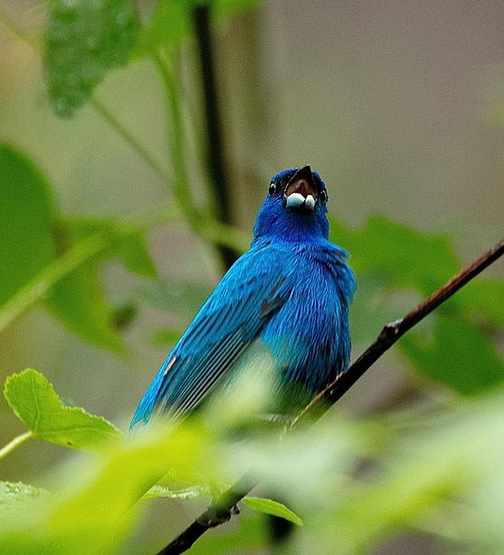
Indigo Buntings are named for their deep blue color that makes them look like they’ve been dipped in indigo dye, yet they are actually dressed in black plumage.
Though they may look colorful, it’s a trick of the light which gives them this boldly hued appearance.
How can this be?
The secret to their incredible colors lies in their unique feather structure which diffracts sunlight to show only a visible blue wave length.
And because the blue is a light show rather than true pigmentation, depending on the angle or quality of the sunlight the Buntings can appear to have several shades of the blue color ranging from aqua to cobalt showing in it’s feathers.
Pretty neat huh?
🙂
Photos by @sally_siko of @birdwatching_nc on the badassssss full frame beast of an SLR, the mighty @canonusa
#5Ds
A Carolina Wren at Yates Mill Park, Raleigh North Carolina
While tracking down a Fox Sparrow in the woods at Yates Mill Park a few weeks ago, I encountered a noisy Carolina Wren squeaking in a briar along the trail. This little bird and it’s mate were bouncing from limb to limb calling loudly to one another as they searched for food.
It took me a few minutes to be able to snap a decent photo since they moved so quickly in the dense tangle of thorns.

This is typical behavior as Carolina Wrens are more often heard than seen because of their preference for dense, brushy areas. They are frequently found in moist deciduous forests (such as what’s found at Yates Mill Park) as well as in suburban areas including parks and gardens, as well as in agricultural areas and forest edges.

The Carolina Wren is an active, energetic, inquisitive species which can act kind of aggressive at times towards perceived intruders, particularly near favorite feeding spots or nesting sites.
Often found in pairs, these birds hold their tails cocked over their backs and are just as likely to dig through leaf litter as they are to climb tree trunks while feeding.
Swipe through to see a few pics of these cool little birds as well as the one shot I ended up getting of that Fox Sparrow!
Photos by @sally_siko of @birdwatching_nc
Canon 5Ds
Yates Mill Park birding: Downy woodpecker encounter
By: Sally Siko- Admin Birdwatching NC
While walking though the woods at Yates Mill Park in Raleigh N.C. last week, I happened to catch a glimpse of a female Downy Woodpecker foraging for food in the leaf litter.
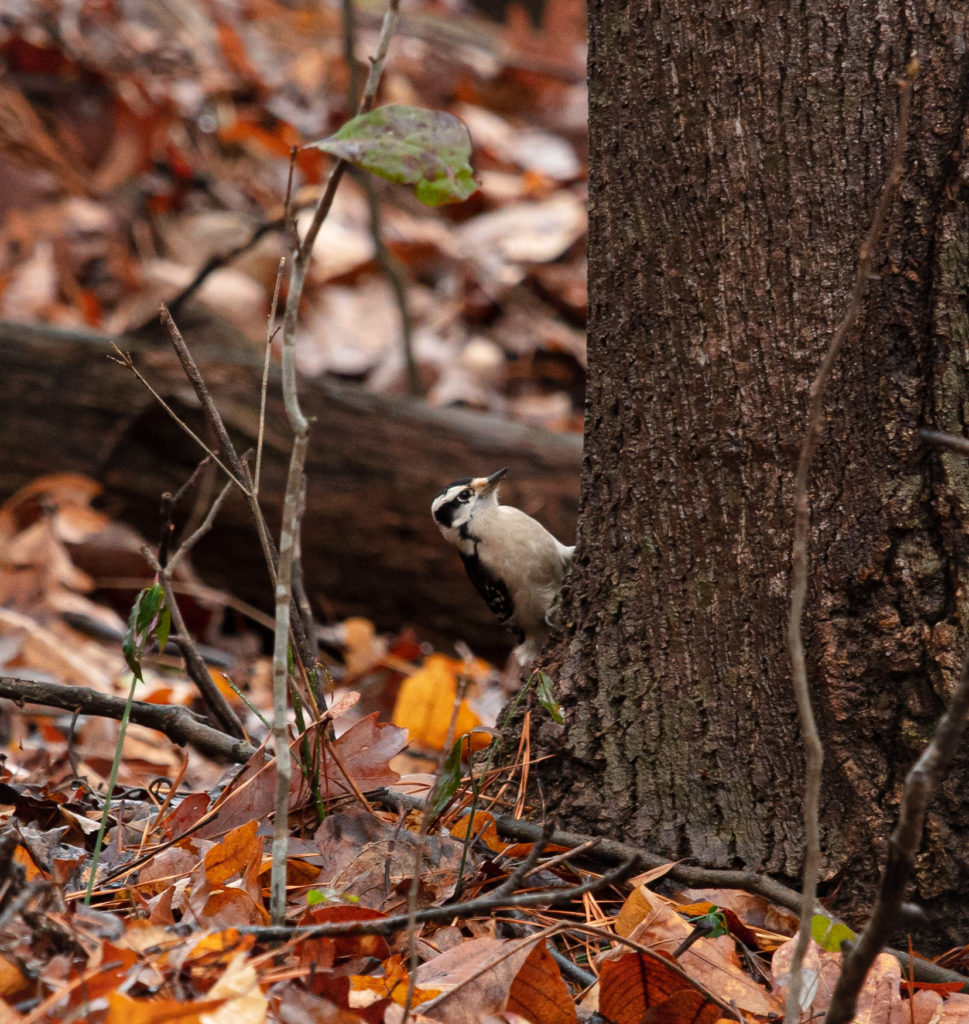
I was surprised to see her rummaging about on the ground as I usually spot these energetic little birds winding their ways up and down tree trunks or hanging (upside down of course, lol!) from limbs.
She pecked away at the base of a tree searching for food for about 5 minutes before making her way up the trunk in the usual fashion.
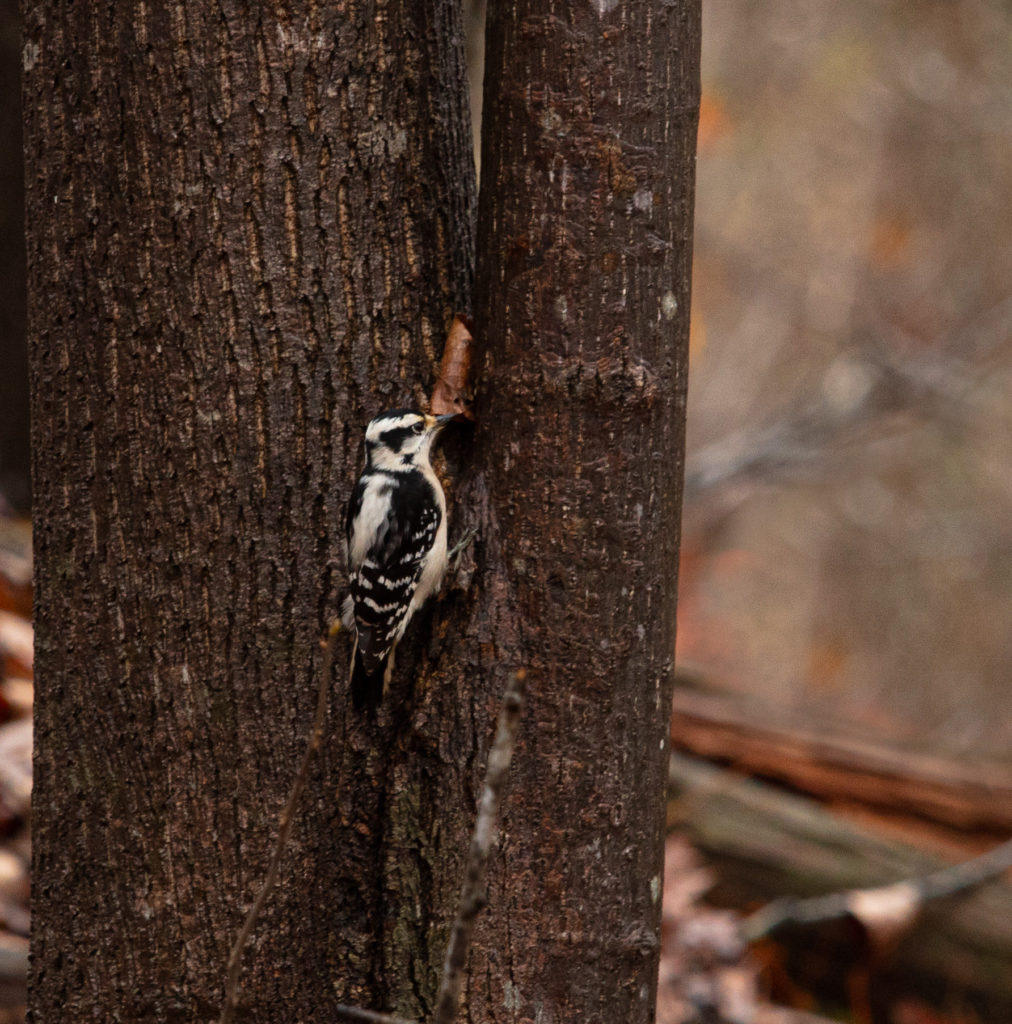
North America’s smallest Woodpecker primarily feed on insects found in the trees. They are known to consume several pest species such as tent caterpillars, fall webworms, bark beetles, and even the invasive emerald ash borer.
Their diet also consists of plant material such as berries, acorns, and grains.
If you’d like to get a good look at a Downy Woodpecker for yourself, fill your feeder with black oil sunflower seeds and offer a suet cage.
Enjoy the show!
Photos by @sally_siko of @birdwatching_nc
Canon 5Ds
Come birding with me! I’ve got a few tours scheduled for Yates Mill Park in 2020. Check out the link below for trip details and available dates.
Yates Mill Park Birdwatching : Ring necked ducks
By: Sally Siko- Admin Birdwatching NC
So happy to catch these shots of a pair of Ring necked Ducks a few days ago at Yates Mill Park in Raleigh.


I spied them near the shoreline through the trees as I was walking along the path near the visitors center. Unfortunately, as soon as the ducks spotted me, they took off paddling at full speed.
Not wanting to miss the shot, I took off at full speed down the trail to try and at least get a photo or two from the mill dock before the ducks swam out too far away.
Lol, I bet it was a sight to see. Me running like a lunatic, camera bouncing off of my side after a couple of ducks 😉
Happily I managed to grab a couple pics before they moved on.

Ring-necked Ducks are proficient divers which sometimes go to great depths to obtain food. They’ve got a compact build with legs that are positioned further toward the back of their body which enhances their diving ability.
This is in contrast to the more center-balanced leg placement of most puddle duck species which dive less, yet walk on land more frequently.
Oh and about their name…
Seriously what is up with this?
There is chestnut colored ring around the male’s neck (or so they say, haha!) which is barely discernible, even in the best of lighting conditions.
Surely we can do better. With those iridescentpurple heads and tri-colored bills, they’ve got some visually striking features in addition to their unusual leg placement.
So, does anyone out there have a better name idea for these handsome ducks?
Photos by @sally_siko of @birdwatching_nc
Canon 5Ds
Come birding with me! I’ve got a few tours scheduled for Yates Mill Park in 2020. Check out the link below for trip details and available dates.
Birding at Yates Mill Park: Ruby crowned Kinglet
By: Sally Siko- Admin Birdwatching NC
My
favorite photos from my visit to Yates Mill Park in Raleigh N.C. this
morning are of this charming little Ruby-crowned Kinglet.
He was quite inquisitive about my presence in the woods and stopped moving just long enough for me to catch these few shots.

Kinglets aren’t quite as small as hummingbirds, but they’re smaller than most other birds you’ll find here in North Carolina.
Don’t let their diminutive size fool you!
This is a little bird with a great big appetite.
These energetic little ones have super high metabolisms which require them to eat every 15 minutes or they risk losing needed fat reserves in a hurry.

A wintertime resident in the Triangle, Ruby-crowned Kinglets will stick around until early spring. Then, they’ll depart for their breeding grounds in the northern United States and Canada.
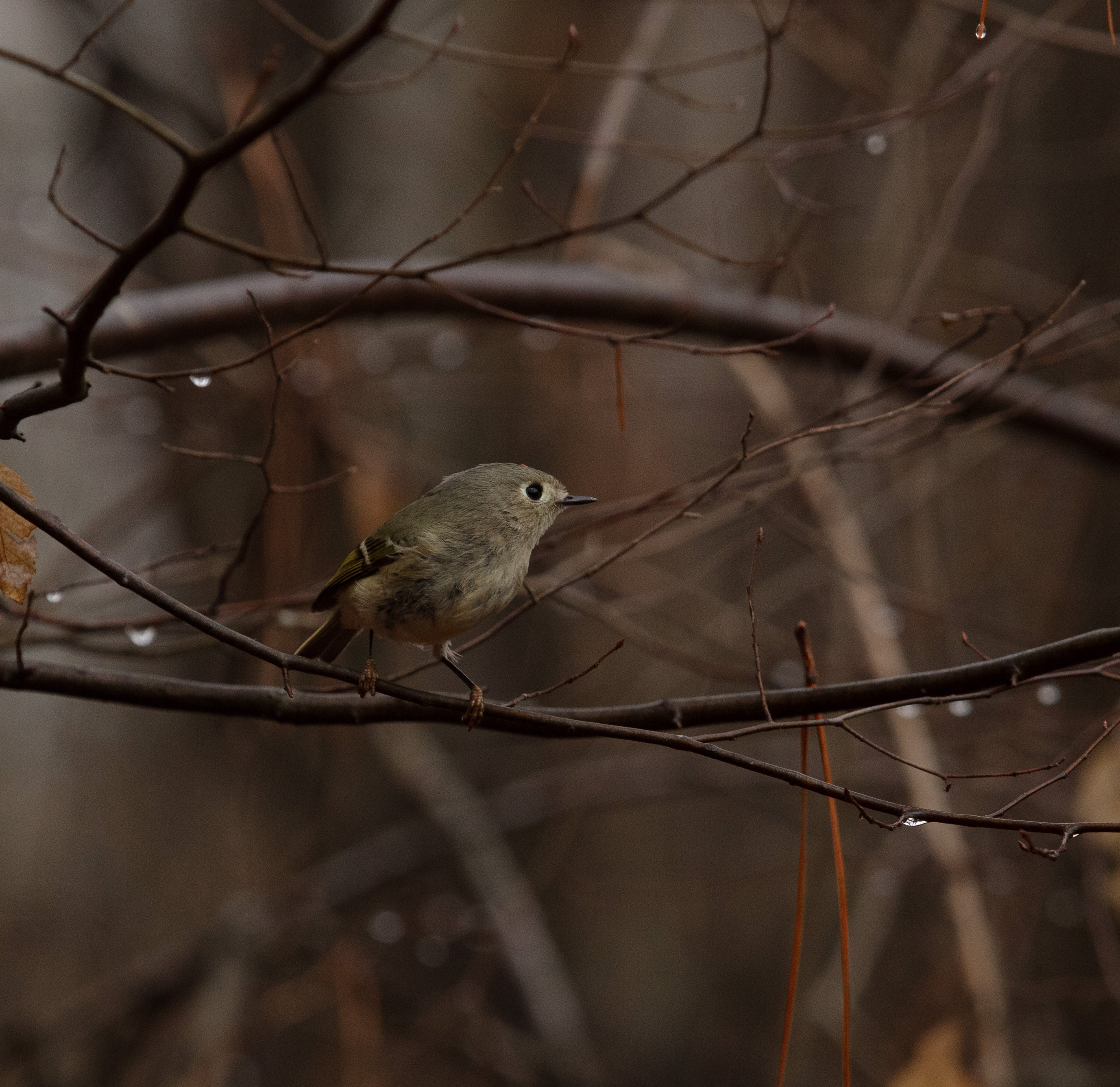
Such a cool little bird to see on a rainy winter morning here on the N.C . Birding Trail 🙂 Photos by @sally_siko of @birdwatching_nc
Canon 5DS
Come birding with me! I’ve got a few tours scheduled for Yates Mill Park in 2020. Check out the link below for trip details and available dates.
NC Birding News Rare Bird Alert: Greater White- fronted Goose at Yates Mill Park Raleigh, N.C.
By: Sally Siko- Admin Birdwatching NC

This morning was actually one of the best birding days I’ve had in a while! I got up early and drive out to the Mid Pines Road area because I’d heard of reports that said that there was a White fronted Goose hanging out in the fields of NCSU farms.
It was super cloudy and kind of dark when I arrived at 7:45. I drove up and down Mid Pines Rd anyway scanning the vast landscape for signs of the Goose. I had no luck! This bird was nowhere to be found.
By now, it was around 8am so I thought I’d try looking for the Goose at nearby Yates Mill Park. On my way out to Yates Mill, I got lucky and spotted a Peregrine Falcon sitting in a tree just north east of the Mid-Pines dog-leg. Wow! That was freak’n awesome!!! You can read about that encounter HERE.
As I pulled into the parking lot of Yates Mill, I could see a huge flock of Canada Geese sitting on the water through the trees. Now, I was getting excited! I’d had a hunch that the White fronted Goose would be likely to be found in the company of other geese. Now, it was time to see if this idea paid off.



Making my way to the boardwalk, I could hear the geese honking and splashing. As soon as the flock was in sight, I took out my camera and started searching for the White- fronted Goose (WFG) on the water. This was not easy! There were so many Canada Geese, Mallards, and Ruddy Ducks here that picking out the WFG in this loosely mixed flock was proving to be difficult.
Then, there it was!

I was so happy that I finally spotted it! the White fronted Goose was much smaller than the Canada Geese . Yet, he/she seemed to fit right int with the rest of the flock.


Who is watching who? Lol!

I spent about an hour watching the WFG and taking photos. I think this is remarkable sighting because this Arctic tundra-nesting species normally spends it’s winters in the western half of the United States. So cool to think that this little Goose had somehow ended up here in central North Carolina…and I’m standing here looking right at it.

As I made my way back to my truck, I smiled at the wonder of finding a Peregrine Falcon and a Greater White fronted Goose in the same day. One bird was found by research, & instincts, the other by pure luck. I think that both kinds of encounters are a joy to experience in equal measure.
Happy Birding!
-Sally
Here is a map of Yates Mill Park. The Greater White fronted Goose was seen in the northern part of the pond.
NC Birding News Rare Bird Alert: Peregrine Falcon sighting at Mid Pines rd. Raleigh, N.C.
By: Sally Siko- Admin Birdwatching NC
I set out today to find a rare White-fronted Goose that had been recently reported in the Mid Pines Rd. area of Raleigh North Carolina. Driving along the gravel road , I searched the fields and ponds. But, to no avail. This Goose was nowhere to be found.
Not finding anything interesting, I turned my truck around. Maybe I should check out nearby Yates Mill Park to see if the Goose might turn up there. As I made my way back down the road, a raptor perched on a far away tree caught my eye. I pulled over, grabbed my camera, and hopped out of my truck.
The skies were still pretty dark at this time. It was very difficult to focus my lens on the bird in these lighting conditions. I snapped off three shots. I reviewed the first two in camera and was disappointed with the quality of the images. They were so dark and grainy and absolutely useless for ID purposes.
Feeling deflated, I did not even bother looking at the third photo assuming that it was garbage too. In fact, I almost deleted the photos off of my camera right there and then. Left thumb planted on the trashcan button, for some reason, I hesitated. Something inside me said “look at these photos later”. So, I kept the RAWs anyway.
Standing there in the cold field, I debated weather or not to keep trying to get a better shot of this mystery raptor but ended up deciding to move on with my search for the White-fronted Goose. After all, this bird was really far away and the lighting was not looking like it was going to improve with all of the clouds moving in. Besides, my first thought was that this was likely a Red-Tailed Hawk and I’d have plenty of other (and better) photo opportunities to see one later.
So, off to Yates Mill Park I went. I did not give this encounter a second thought. Especially after how my birding at Yates Mill Park went. Let’s just say that I was not dissappointed. More on that later, stay tuned!
When I got home, I uploaded the photos onto my Mac. I could not believe my eyes! Yes, the first two photos of the mystery raptor were indeed absolute hot digital garbage but that third image… this third shot did not show a Red-tailed Hawk.
No.

It was a freak’n Peregrine Falcon!!!
This is a particularly nice find. You see, up until the 1950’s, Peregrines nested regularly here in North Carolina. Then, they were nearly completely wiped out, almost to the point of extinction. Their rapid disappearance from the eastern U.S., (as well as their decline in areas of the western U.S.) were caused by man-made environmental contaminants, including the pesticide known as DDT.
These pesticides got into the water and were absorbed by insects. Small birds ate the poisoned insects, and became contaminated themselves. Peregrines ate the contaminated small birds, and by now the multiplier effect of the pesticides in the food chain caused concentrations high enough to kill many birds directly. Worse yet, the pesticides interfered with calcification of eggshells, resulting in thin eggshells which were crushed as the parents sat on them during incubation.
In 1970, the U.S. Fish and Wildlife Service listed the Peregrine falcon as an endangered species. Recognizing the effect of DDT, the E.P.A. banned this pesticide from use in the United States back in 1972. Attempts at restoring the peregrine falcon began in 1974 with the first release of captive bred falcons.
The N. C. Wildlife Resources Commission began releases in 1984. Eighty juvenile peregrines had been released in the state by 1991. An additional 12 birds were released in 1996 and 1997 to increase the population in the Southern Appalachian Mountains.
Although the U.S. Fish and Wildlife Service removed the peregrine from the Federal Endangered Species list in 1999, it remains protected under the N.C. Endangered Species law and at the federal level by the Migratory Bird Treaty Act.
Although, the survival of peregrines in N.C. still remains tenuous due to a low rate of successful nests, the species does appear to be recovering (slowly) here in the Tar Heel state through the efforts of the North Carolina Wildlife Resources Commission breeding and nest monitoring programs.
This bird is a lifer for me as I have never photographed a Peregrine in the wild before. I’m absolutely thrilled and am honestly wishing that I could leave right now to go back out to this birding spot to get another crack at photographing this bird. Unfortunately, my family has other plans for the rest of my day.
But, that doesn’t mean that you cant try instead!
Ok, here are the details of where I saw this bird along Mid Pines Rd. Below is the Google maps link to get to the general area…
Here is a screen shot of the exact location where the Peregrine was sighted. I spotted him in the treeline that lines the field to the north-east of the dog-leg.
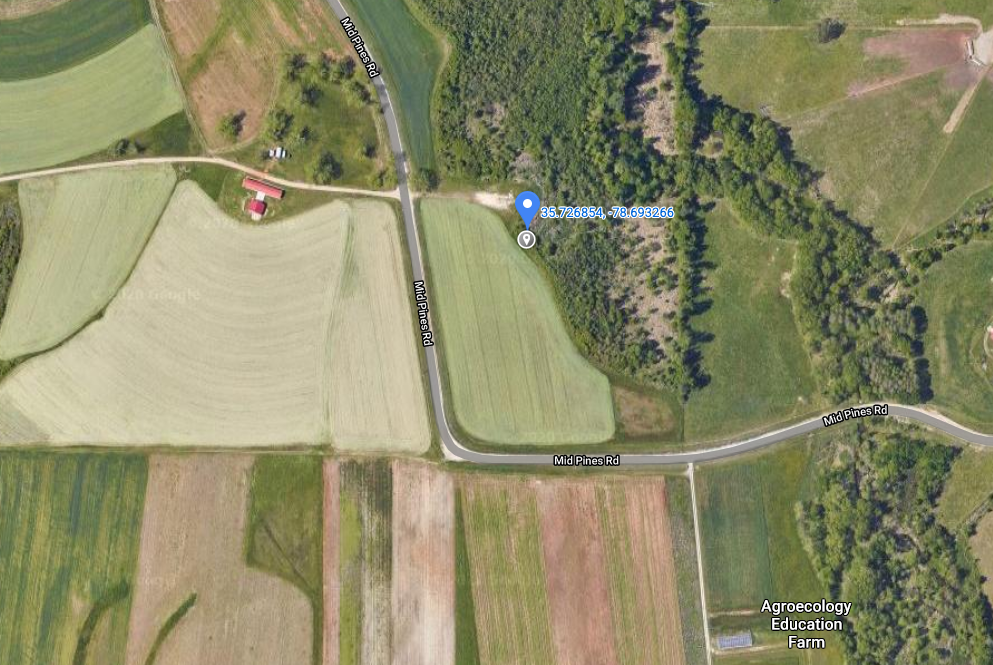
Hope that you get a chance to see and photograph this impressive bird too!
Happy Birding!
-Sally
References: Phil Spivey, Allen Boynton. Updated by Chris Kelly, NCWRC Johnsgard, Paul A. Hawks, Eagles and Falcons of North America (Washington, D.C.: Smithsonian Institution Press, 1991).Ratcliffe, Derek A. The Peregrine Falcon (Vermillion, SD: Buteo Books, 1980).Scott, Shirley L., ed. Field Guide to the Birds of North America (Washington, D.C.: The National Geographic Society, 1987).Terres, John K. The Audubon Society Encyclopedia of North American Birds (New York, N.Y.: Wings Books, 1980
